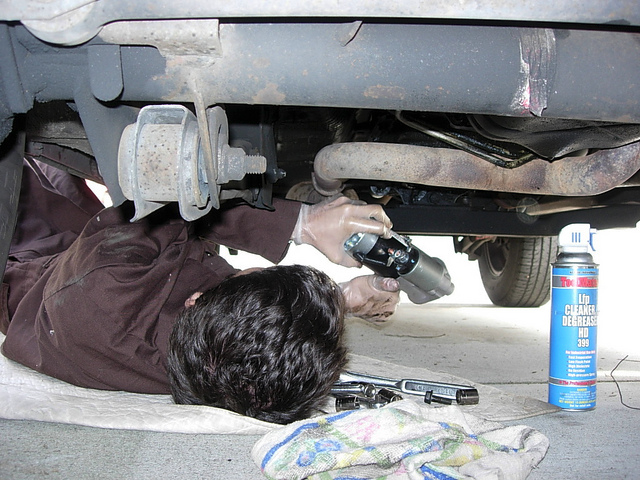With rising motoring costs in the United Kingdom, it can be hard for many people to afford to keep their cars on the road.
Although there are certain costs which cannot be avoided such as vehicle excise duty, insurance and MOT testing, a large number of motorists are entertaining the idea of doing some basic servicing and repair work on their cars themselves.
If you don’t mind getting your hands dirty, and you want to learn how to service and repair your own car (as well as any other car you buy in the future), here are some handy hints and tips for you to check out!
Familiarise yourself with your car
Obviously you already know how to drive your car, but are you familiar with all of the different mechanical and electrical aspects of your car?
Although the basic functionality of the internal combustion engine hasn’t changed much over the years, car manufacturers often seek ways to improve fuel efficiency and safety of their cars and so it is commonplace to see all sorts of different engine designs being used in cars these days.
In order to diagnose any issues with your car, it is very important to know where certain components of your engine or ancillary systems are. The owner’s manual that came with your car will give you details of where common parts are located on your car.
If you don’t have an owner’s manual, you can always buy one off eBay or alternatively you could contact your local main dealer.
Utilise handy sources of information
According to Imperial Car Supermarket, the Internet can prove to be an invaluable tool for seeking knowledge of many automotive aspects for many DIY home mechanics. Here are some useful examples:
-
Video websites – if you go on websites such as YouTube or Vimeo, you will often come across videos uploaded by other people that explain how to perform certain repair jobs on cars. For example, if you need to change the cam belt on your car, you will find a plethora of video tutorials detailing this job;
-
Enthusiast forums – you are highly likely to come across a car forum set up by an enthusiast of your model or make of car. These community websites often have “how-to” sections which cover a wide range of automotive repair topics, and will often detail money-saving or timesaving ways to perform certain repairs.
Of course, not everyone will use the Internet when they are in the middle of removing the cylinder head on their car’s engine, for example, so it’s also useful to have some paper-based literature in the form of repair manuals handy for all garage jobs that you will perform.
The world-famous Haynes manual is referred to by many people as their car’s bible and has easy step-by-step instructions with detailed diagrams and photographs to show you how to perform many DIY repair tasks on your car at home.
Finally, you could always get a job as an apprentice mechanic and get paid whilst you learn! It’s a great way of gaining insight into how cars are repaired on a daily basis, as well as the sorts of tools needed so that you can start to build up your own tool collection at home!







